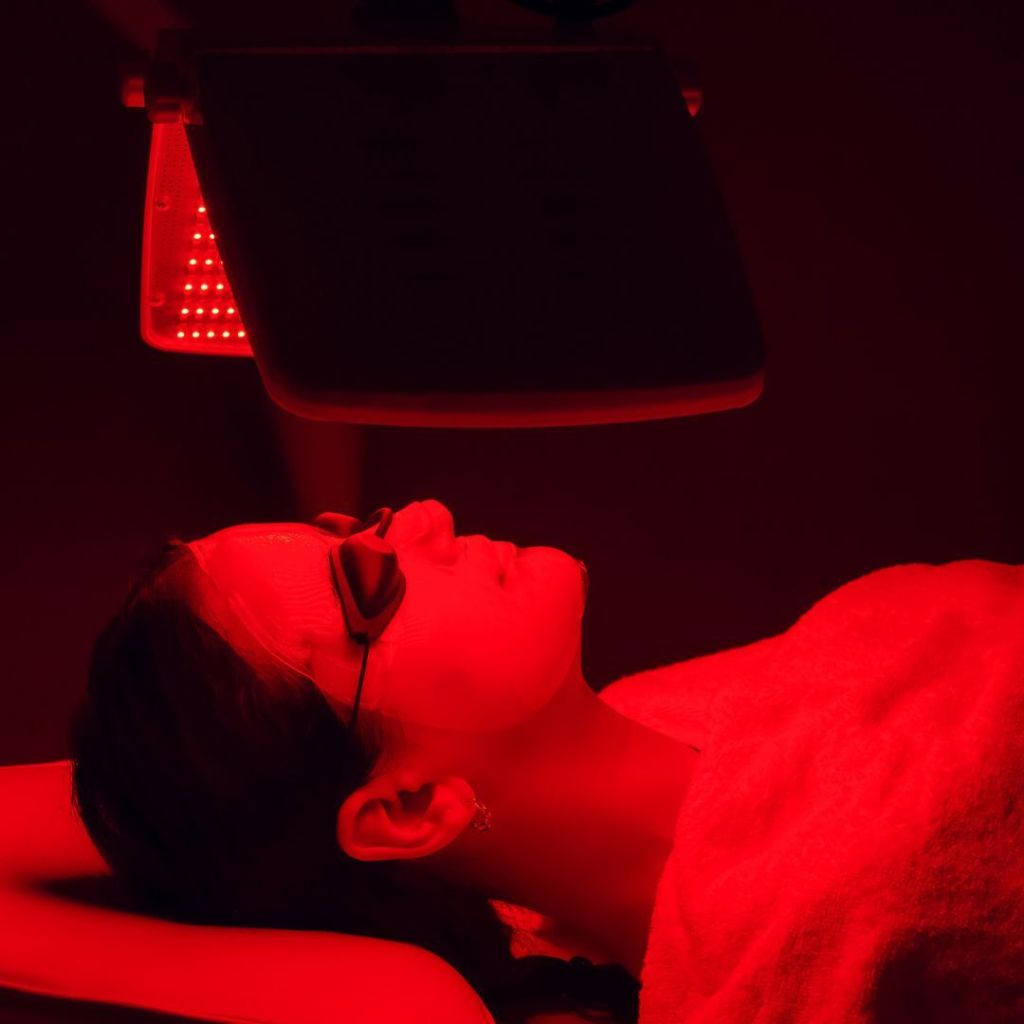What’s new in wellness?
Published 1:59 pm Thursday, October 5, 2023

- Untitled design - 1
Health & Wellness – 3 popular treatments
What’s new in wellness?
Fad or Factual – Local experts weigh in
In the ever-evolving landscape of health and wellness, new trends emerge each year, promising to enhance our wellbeing and lead us to a healthier lifestyle. Some wellness trends come and go, while others make a lasting impression in the wellness community, proving to be truly beneficial. We took a deep dive into three of these trends and got the skinny on their benefits from practicing healthcare providers. We’ll explore what experts say about these practices and whether they are backed by scientific evidence or be replaced by the next tending wellness fad.
Red Light Therapy
Red light therapy exposes the body to low-level red or near-infrared light. Advocates claim it can boost collagen production, reduce inflammation, and improve skin health. According to experts, there is some promising research indicating that red light therapy may have certain benefits. For instance, it has been used in clinical settings for wound healing and treating skin conditions like psoriasis.
Kendyl Thomas, certified integrative nutrition coach and co-founder of Ascend Wellness in Lafayette, explains how red light therapy promotes cellular healing. “The red light penetrates the skin and reaches the cell’s mitochondria. This interaction may enhance cellular function, promoting natural healing processes and improving overall well-being.”
In recent years, red light therapy has garnered increased attention and acceptance within the traditional medical field. Some studies have shown promising results, and healthcare providers are cautiously exploring its applications as a complementary therapy alongside conventional treatments.
Jordan Smith, RDN, reveals that peer-reviewed literature suggests red light therapy improves blood flow and tissue repair by increasing intracellular production. Smith has witnessed the benefits firsthand for battling depression, inflamed joints, and a past case of post-concussion syndrome. Smith’s mom, a registered nurse and infrared skeptic, has also seen the light. “My mom has a significant autoimmune condition, so I suggested red light therapy. She began consistently using my infrared device and has found it quite helpful.”
“While it’s not a cure-all,” Smith says, “daily infrared exposure might be a helpful addition to a healthy lifestyle.” Smith suggests increasing infrared exposure by taking morning and evening walks when the sunlight has lower UV levels. “I usually get my infrared exposure by taking morning walks with a fair amount of skin exposed.”
While more research is needed to fully understand its mechanisms and efficacy, the growing interest among medical experts suggests a positive outlook for integrating red light therapy into mainstream medicine as a valuable tool for enhancing patient well-being.
Holistic Chiropractic
Holistic chiropractic care is a distinctive approach that focuses on restoring the body’s natural healing abilities rather than targeting specific conditions. At its core, this practice recognizes that signs and symptoms are the body’s way of communicating with the nervous system and other bodily systems, including circulatory, digestive, hormonal, muscular and more.
Dr. Kell–Jo Richard, owner of Lafayette’s The Reservoir Chiropractic says, “As a holistic chiropractor, I focus on the nervous system. Nervous system-focused chiropractic addresses areas of the body that aren’t effectively communicating with the brain via specific spinal adjustments to increase bodily awareness, adapt to life’s stressors and promote optimal healing conditions.”
Holistic chiropractic is gaining popularity in healthcare, and traditional medical doctors often recognize the value of chiropractic care for musculoskeletal issues, particularly for pain management and improved mobility. Some traditional doctors may view chiropractic as a valuable complementary therapy, but they may advise patients to combine it with conventional medical treatments for more complex health conditions.
Dr. Richard states, “Expectant moms, infants, children and adults who use consistent chiropractic care as a wellness routine and preventive basis reap the benefits of a balanced nervous system including enhanced function, improved sleep/energy, quicker recovery, better digestion, proper development, easier labor/delivery and decreased discomfort.”
Homeopathy
Homeopathy, while often a subject of debate, is regarded positively by some individuals within the medical community for its holistic and patient-centered approach to health and wellness. Supporters argue that homeopathy’s use of highly diluted substances to stimulate the body’s innate healing abilities aligns with the principle of individualized care. This approach can offer benefits by considering the whole person, including physical, mental, and emotional aspects, and may relieve certain conditions. While mainstream medical consensus remains skeptical about the efficacy of homeopathy due to the lack of robust scientific evidence, some healthcare practitioners appreciate its non-invasive nature and its potential to complement conventional treatments, providing a more comprehensive and personalized approach to patient care.
Kristen Godeaux, RNP, uses homeopathic remedies for her children. “What I love about homeopathy is that it’s safe,” she assures us. “I can confidently give my teething baby arnica and chamomilla throughout the day without worrying about chemicals in popular over-the-counter medicines.” There is also little concern about interactions or overdosing because most formulas are in sugar tablet form. It is important to note, however, that some formulas can be preserved in alcohol, so not all homeopathic medicines are suitable for children.
Godeaux admits that the plus side of homeopathic medicine is also its downside. “Either it works, or it doesn’t. So, I’ll use traditional medicines in conjunction when I feel it is necessary.”





